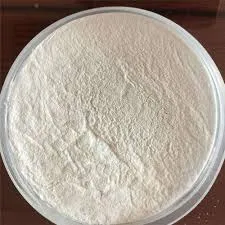
Dec . 06, 2024 10:00 Back to list
hpmc glass transition temperature
Understanding the Glass Transition Temperature in HPMC
Hydroxypropyl methylcellulose (HPMC) is a widely used polymer in various applications, particularly in the pharmaceutical, food, and construction industries. One essential property of HPMC is its glass transition temperature (Tg), which plays a crucial role in determining its physical behavior and application performance. This article delves into the significance of Tg in HPMC, its implications, and the factors influencing it.
What is Glass Transition Temperature?
Glass transition temperature refers to the temperature range where an amorphous polymer transitions from a hard and relatively brittle state to a rubbery condition. Below Tg, the polymer chains are in a frozen, rigid state, while above this temperature, they gain mobility, allowing for increased flexibility and decreased viscosity. For polymers like HPMC, Tg is a critical factor as it influences the material's solubility, mechanical properties, and stability.
Importance of Tg in HPMC
1. Pharmaceutical Applications In the pharmaceutical industry, HPMC is often used as a polymeric excipient in drug formulations. The Tg of HPMC affects the dissolution rate of active pharmaceutical ingredients (APIs). A lower Tg promotes better drug release, which is vital for controlled-release formulations. Understanding the Tg helps formulators optimize the performance of medications, especially in solid dosage forms like tablets and capsules.
2. Food Industry HPMC is utilized as a thickening and gelling agent in various food products. The Tg influences the texture and mouthfeel of foods by affecting the gel formation and stability. A strategic control of Tg allows food technologists to tailor products according to consumer preferences and shelf-life requirements.
3. Construction Materials In the construction domain, HPMC is added to cement-based materials as a water-retention agent. The Tg of HPMC can influence the workability and setting times of these materials. Understanding the thermal properties of HPMC ensures optimal formulation design for performance in construction applications.
hpmc glass transition temperature

Factors Influencing Tg in HPMC
Several factors can influence the Tg of HPMC, including
1. Molecular Weight HPMC is available in various grades with differing molecular weights. Generally, higher molecular weight results in a higher Tg due to increased chain entanglement, which restricts molecular mobility.
2. Degree of Substitution The degree of hydroxypropyl and methoxy substitutions on the cellulose backbone also affects Tg. Increased substitution tends to lower Tg, as the bulky substituents disrupt intermolecular hydrogen bonding, enhancing chain mobility.
3. Water Content Moisture plays a pivotal role in determining the Tg of HPMC. The presence of water can significantly plasticize HPMC, reducing its Tg. This phenomenon is particularly important in both pharmaceutical and food applications, where moisture content can vary.
4. Additives and Blends The inclusion of plasticizers or other polymers can modify Tg. For instance, adding a plasticizer like glycerol can lower Tg, resulting in increased flexibility. Understanding these interactions helps in tailoring HPMC for specific applications.
Conclusion
The glass transition temperature is a fundamental property that influences the functional characteristics of HPMC across various industries. By understanding and manipulating Tg, formulators can enhance the performance of HPMC in drug delivery systems, food products, and construction materials. Continuous research into the thermal properties of HPMC, including the impact of molecular structure and environmental conditions, will expand its usability and effectiveness, paving the way for innovative solutions in diverse applications. Emphasizing the importance of Tg will help stakeholders leverage HPMC's capabilities to meet evolving technological challenges and consumer demands.
-
Versatile Hpmc Uses in Different Industries
NewsJun.19,2025
-
Redispersible Powder's Role in Enhancing Durability of Construction Products
NewsJun.19,2025
-
Hydroxyethyl Cellulose Applications Driving Green Industrial Processes
NewsJun.19,2025
-
Exploring Different Redispersible Polymer Powder
NewsJun.19,2025
-
Choosing the Right Mortar Bonding Agent
NewsJun.19,2025
-
Applications and Significance of China Hpmc in Modern Industries
NewsJun.19,2025







